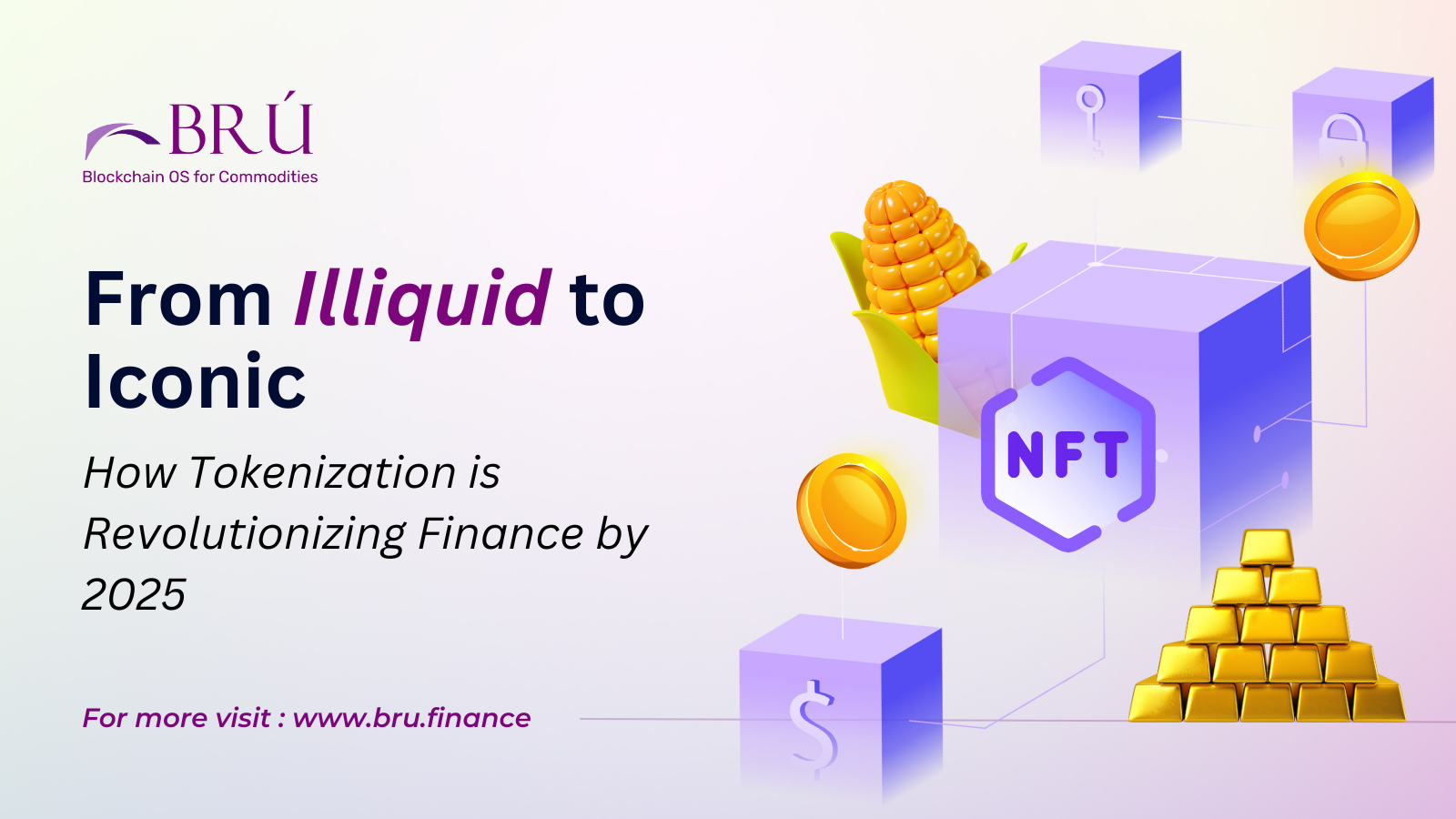
From Illiquid to Iconic: How Tokenization is Revolutionizing Finance by 2025?
Published On : March 20, 2025
Real-world asset (RWA) tokenization is emerging as a transformative application of blockchain technology, bridging the gap between traditional finance (TradFi) and decentralized finance (DeFi). By converting physical assets into digital tokens, this innovation is unlocking new business opportunities, enhancing liquidity, and making traditionally illiquid assets more accessible. It’s also creating a seamless connection between the old and new worlds of finance.
According to industry reports, the total value of tokenized real-world assets exceeded $15.2 billion by the end of 2024 (excluding stablecoins). Institutional players are increasingly adopting this practice, with major financial institutions piloting tokenization projects for assets like real estate, commodities such as gold and diamonds, and even carbon credits.
For example, BlackRock, a leading asset manager, is seeking regulatory approval to tokenize bonds and stocks, while JPMorgan has launched its own tokenization platform and is actively exploring RWA opportunities. This growing interest signals a booming market, with projections suggesting the sector could surpass the trillion-dollar mark within the next five years.
2025: A Turning Point for Tokenization
The year 2025 is shaping up to be a pivotal moment for RWA tokenization. As the practice gains traction, the market is expected to achieve greater regulatory clarity and interoperability, paving the way for widespread adoption. These advancements could unlock unprecedented opportunities for users and investors alike.
Regulatory Alignment: Building Trust and Clarity
Regulatory frameworks for tokenized RWAs are gradually taking shape worldwide. The UAE has already established clear guidelines for RWAs, while regions like Singapore, Europe, and Hong Kong are working toward similar goals. Efforts to harmonize fragmented regulations could lead to a global framework, fostering interoperable protocols and encouraging broader adoption.
However, regulatory maturity also hinges on technical considerations. Blockchain’s decentralized and permissionless nature is ideal for DeFi but poses challenges for TradFi players, who require a degree of control and compliance assurance. Striking the right balance will be crucial for the technology’s success in traditional markets.
The Rise of Multichain Economies
One of the most significant advantages of tokenization is its ability to enhance liquidity, particularly for TradFi. By bringing traditionally illiquid assets onto the blockchain, tokenization creates new, more accessible markets. However, to fully realize its potential, blockchains must enable seamless asset transfers between networks—a feature not inherently built into the technology.
This is where interoperability solutions come into play. The blockchain interoperability market has seen exponential growth, with nearly 30% year-on-year expansion, a trend expected to continue in 2025. The rise of multichain ecosystems is simplifying cross-chain token transfers, reducing transaction costs, and broadening the investor base. These advancements are key to driving mainstream adoption and creating a more connected financial ecosystem.
Fractional Ownership: Democratizing High-Value Assets
Tokenization is revolutionizing access to exclusive markets like art, luxury collectibles, and real estate. Historically, investing in these assets required significant capital, limiting participation to institutions and high-net-worth individuals. Tokenization changes this by allowing high-value assets to be divided into smaller, tradable fractions.
Fractional ownership lowers the entry barrier for investors, enabling a more diverse range of participants to engage in these markets. This democratization of access not only expands opportunities for individual investors but also injects liquidity into previously stagnant markets.
Digital Identity Solutions: Ensuring Compliance
Tokenized RWAs are digital representations of physical assets, serving as certificates of ownership. To trade these assets in a compliant manner, it’s essential to verify the identities of participants on blockchain networks.
This has spurred demand for robust digital identity (DID) solutions and stricter Know-Your-Customer (KYC) protocols. These tools ensure that only authorized, compliant wallets can interact with specific tokenized assets, safeguarding the integrity of the market.
Liquidity Innovations with Decentralized Exchanges (DEXs)
At the heart of RWA tokenization is the promise of enhanced liquidity. Decentralized exchanges (DEXs), where on-chain assets are traded, play a critical role in unlocking this potential. Unlike traditional exchanges, DEXs operate 24/7 and are accessible to anyone with an internet connection. This eliminates reliance on centralized intermediaries and opens up continuous trading opportunities for users worldwide.
Looking Ahead: 2025 and Beyond
RWA tokenization is transitioning from experimentation to real-world impact. By 2025, the industry is expected to mature, driven by regulatory clarity, interoperability, fractional ownership, digital identity solutions, and innovative liquidity mechanisms. The coming years will test its ability to integrate with traditional markets and deliver tangible benefits.
Collaboration between institutions, regulators, and blockchain innovators will be essential to scaling this transformation. If key players can build the right infrastructure and establish favorable legal frameworks, tokenized assets could serve as a powerful bridge between TradFi and DeFi. This would redefine capital markets, making finance more efficient, accessible, and globally interconnected. The future of finance is being rewritten—and tokenization is at the forefront of this revolution.
For more updates and latest news about Brú Finance, please join our Twitter Channel, Discord server, LinkedIn, Telegram at
Please join our Discord events and Twitter AMAs to connect directly with our founders and ask your queries.
Discord: https://discord.gg/8C9SZXDy2r
Telegram Channel : https://t.me/bruofficial
Twitter : https://twitter.com/bru_finance
LinkedIn : https://www.linkedin.com/company/bru-finance/
Facebook :https://www.facebook.com/brufinance/
Instagram :https://www.instagram.com/brufinance/?igshid=YmMyMTA2M2Y%3D

 1.png)